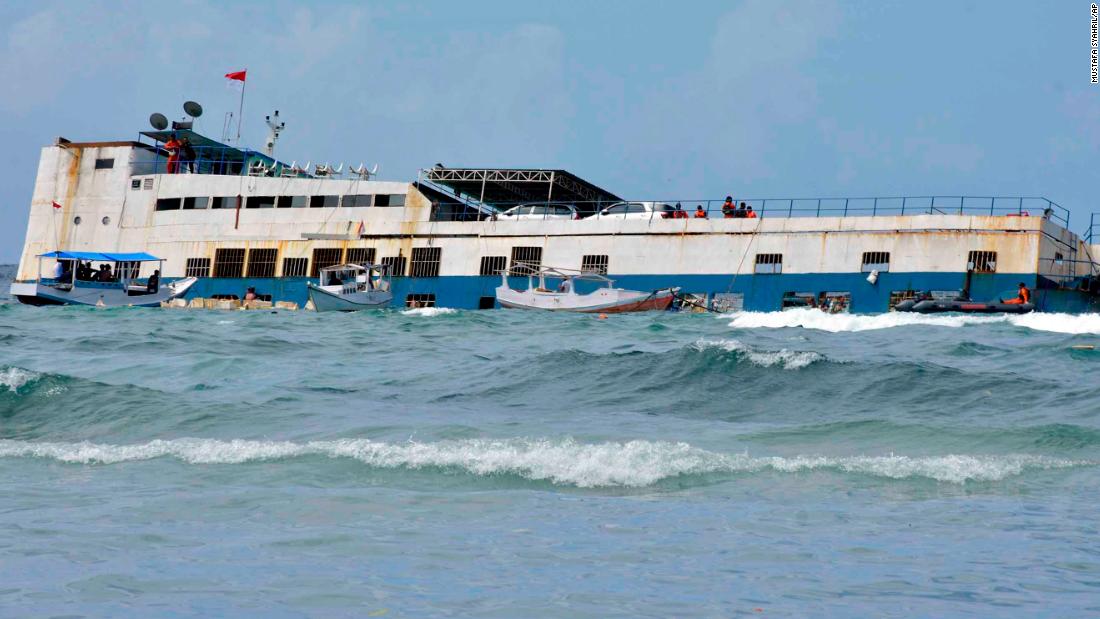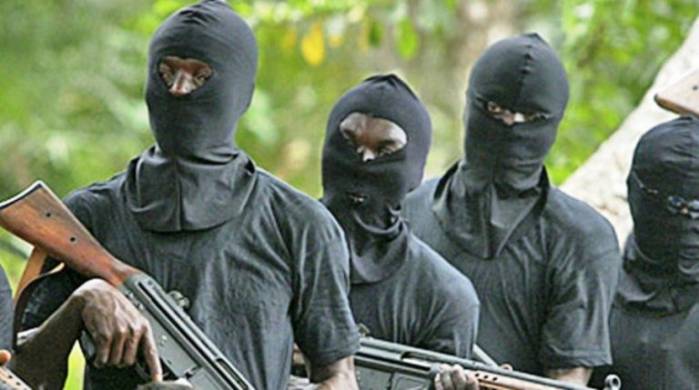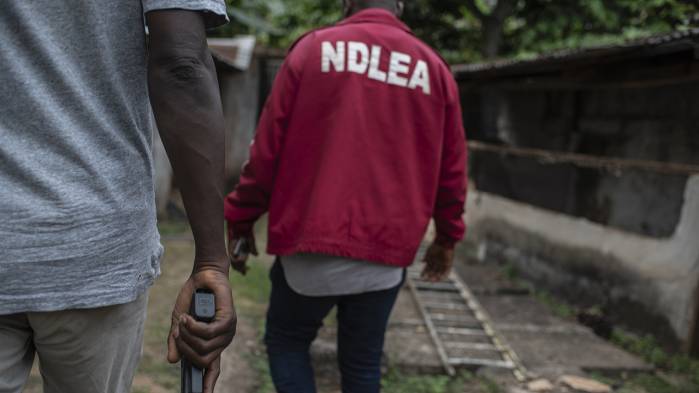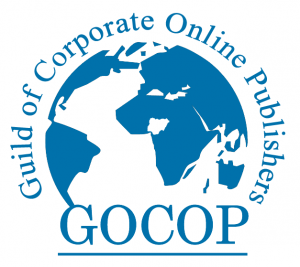Melting bitumen has forced drivers in Australia to abandon their vehicles after the tyres became coated with tar.
Up to 50 motorists may be entitled to compensation over the incident in Queensland on Tuesday, reports said.
“I have never seen anything like it and when the reports started coming through yesterday, it was just incredible,” local mayor Joe Paronella told the ABC.
The incident has been blamed on a change in weather and damage to the road after it was resealed last week.
Local resident Deborah Stacey said “big globs” of tar had stuck to vehicles, amid hot weather that followed several cooler days and rain.
“We had a week of cracked windscreens… then as soon as the sun came out, it started sticking,” she told the Courier Mail.
The tar meant tyres on several vehicles had to be replaced, and it caused damage to bumper bars and panels.
The road, located in the Atherton Tablelands south of the city Cairns, was briefly closed.
Queensland’s Department of Transport and Main Roads said compensation would be offered to drivers whose vehicles were damaged.
………………………………………………………………………….
Two people poisoned by same nerve agent used on ex-spy, police say

Two people found unconscious in southern England on Saturday were exposed to the same nerve agent used to attack an ex-Russian spy in March, London Metropolitan Police said Wednesday.
The pair remains in critical condition in Salisbury District Hospital, the same hospital where former double agent Sergei Skripal and his daughter were treated after they were exposed to Novichok, a military-grade nerve agent.
The UK government suspects the Skripals were victims of a Russian attack.
The UK’s National Counter Terrorism Policing Network is leading the investigation.
Officers are investigating the possibility of a connection between the two attacks, said Neil Basu, assistant commissioner for counter terrorism at London Metropolitan Police.
But no evidence so far suggests the couple was specifically targeted, he said.
“I don’t have any intelligence or evidence that they were targeted in any way. There is nothing in their background to suggest that at all,” Basu said.
“We are not in a position to say whether the nerve agent was from the same batch that the Skripals were exposed to. The possibility that these two investigations might be linked is clearly a line of inquiry for us.”
Paramedics were called to an address on Muggleton Road in Amesbury the morning of June 30 after a woman collapsed at the property, Wiltshire Police Deputy Chief Constable Paul Mills told reporters earlier Wednesday.
They were called back later the same day after reports that a man became ill in the same location, he said.
British news agencies identified the two people as Charlie Rowley, 45, and Dawn Sturgess, 44.
Sam Hobson, a friend of the pair, confirmed their names in an interview with Agence France-Presse.
The two victims are British nationals local to the area, according to police in Wiltshire, the county in which Amesbury is located.
Wiltshire Police said they were initially believed to have fallen ill after using crack cocaine or heroin from a contaminated batch.
On Monday, due to concerns over their symptoms, samples from both patients were sent to a laboratory for analysis.
“Following the detailed analysis of these samples, we can confirm that the man and woman have been exposed to the nerve agent Novichok, which has been identified as the same nerve agent that contaminated both Yulia and Sergei Skripal,” Basu said.
“I do want to reassure the public, however, that there is no evidence that either the man or woman recently visited any of the sites that were decontaminated following the attempted murders of Sergei and Yulia Skripal,” he said.
…………………………………………………………………………
Dozens dead in Indonesia ferry sinking

At least 34 people have been confirmed dead in a ferry sinking off the coast of Indonesia’s South Sulawesi province.
Images from the scene Tuesday showed passengers in bright orange life vests clinging to the side of the KM Lestari Maju as it tilted sharply into the water not far from the coast of Bulukumba regency, near Selayar Island.
At the time of the crash, the boat was filled over capacity, with a total of 189 passengers.
Cars, buses and trucks were also on board at the time.
Sutopo Purwo Nugroho, spokesman for Indonesia’s disaster management agency, said 155 people had managed to swim or be pulled to safety.
A leak on board the port side of the ship caused it to quickly run into trouble on rough seas.
As the boat began taking on water, the captain of the ship steered the vessel toward the nearby Selayar Island, and deliberately crashed it in the shallows.
The rescue effort was initially complicated by the bad weather, which prevented large boats from approaching the wreck and trapped some passengers on the stricken ship overnight.
However, a fleet of smaller boats – including local fishing vessels – stepped in Wednesday to help.
Deadly maritime accidents are not uncommon in Indonesia.
Tuesday’s sinking comes two weeks after another ferry accident in a volcanic lake in Sumatra.
More than 190 people were presumed drowned in that incident said to be one of the worst maritime accidents in the country for decades.
………………………………………………………………………….
Read also: Foreign Titbits: Thailand cave: ‘Zero risks’ to be taken in rescue of boys
Downing Street sets out some details of new Brexit customs plan

Downing Street has set out some of the detail of how customs could be handled after Brexit.
No 10 says its new plan – dubbed the “facilitated customs arrangement” – offers “the best of both worlds.”
The details come as Theresa May and Angela Merkel prepare to discuss the progress of Brexit negotiations when they hold talks in Berlin later.
The UK prime minister is facing calls from the EU to clarify the UK’s position.
According to Number 10, the new plan would allow the UK the freedom to set its own tariffs on goods arriving into the country.
Technology would be used to determine beforehand where they will ultimately end up – and therefore whether UK or EU tariffs should be paid.
Downing Street says it is confident the arrangement would be partly in place by the end of the proposed transition period in December 2020 – with the system being fully operational by the next general election.
On regulations, it is understood that the UK would closely mirror the EU’s rules – but parliament would be able to decide where to deviate.
However, the arrangement has not been explained in full – and it is not clear whether the cabinet will back the plan, or whether the EU would agree.
A source close to Brexit Secretary David Davis refused to comment on a Daily Telegraph report that he had already told Mrs. May the plan is unworkable.
Mr. Davis and Mrs. May are “working closely on what will be presented on Friday,” the source said.
The UK is leaving the EU in March 2019, but has yet to agree how it will trade with the remaining EU members – who are part of a single market and a customs union.
In particular, a solution is needed to avoid new border checks between Northern Ireland and the Republic when the UK is outside the customs union.
Eurosceptic MPs have warned Mrs. May against tying the UK to the EU after it leaves, saying this will prevent it from striking its own trade deals with other countries.
After two models for customs were criticised, Downing Street has come up with a “third way” solution, to be presented to the cabinet when it gathers at Chequers on Friday.
After Friday’s meeting, the government is expected to publish a White Paper setting out its plans in detail.











